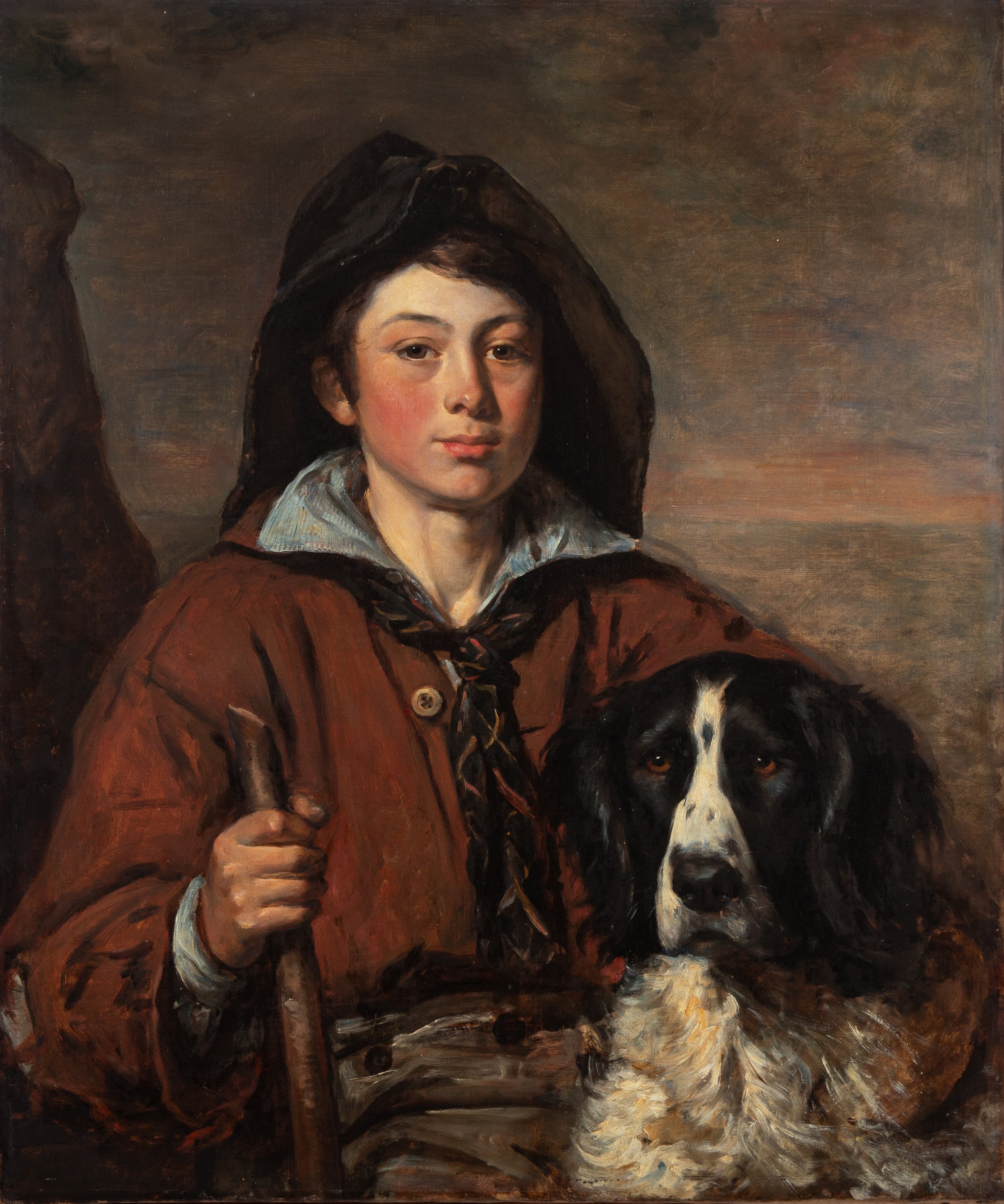Elizabeth Emma Soyer (1809/1810-1842)
Young Mariner and Dog, 76.5 x 63.8cm (approx. 30 x 25”)
Oil on Canvas (Unlined)
Stamped: “T Brown | High Holborn 10 | 31” (Date Stamp for October 1831)
(20 minutes walk from Soyer’s house at No. 1 Fitzroy Street)
Exhibited: British Institution, 1833 (68) “Young Mariner and Dog”
Yale Center for British Art
The following work is the first example of Soyer’s work to reach the permanent collection of any international museum. But the Yale Center is also a research institute and Emma Soyer deserves to be the subject of serious research.
Soyer represents an untrodden area in British art, a rare case of a painter who is both technically faultless and academically appealing. She is as sophisticated as anyone painting in Britain in the years following the death of Sir Thomas Lawrence in 1830 and it is remarkable that she did it all before the labour saving inventions of the Victorian era: railways, industrialisation, tubes of paint, electric lighting – in short, developments that make it easier to be a painter.
She also missed the expansion of art schooling (fee-paying students and teachers instead of apprentices and masters), which became a more efficient way of producing painters, hence why there are more of them in the 2nd half of the 19th century. This is especially true of female artists, where social restrictions have lessened and the availability of education has increased substantially. In the census of 1841, 278 women in Britain gave their profession as artists. By 1871 the number had risen to 1069.
Dominic Sanchez-Cabello, Plymouth

